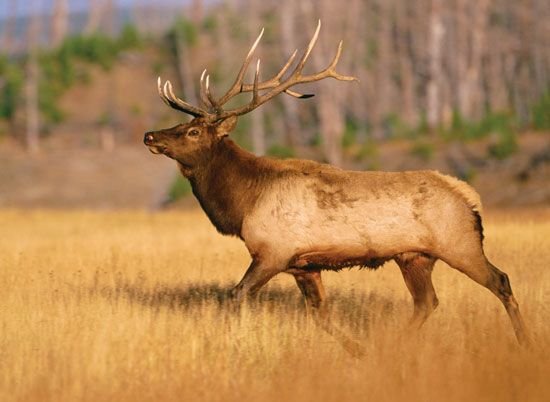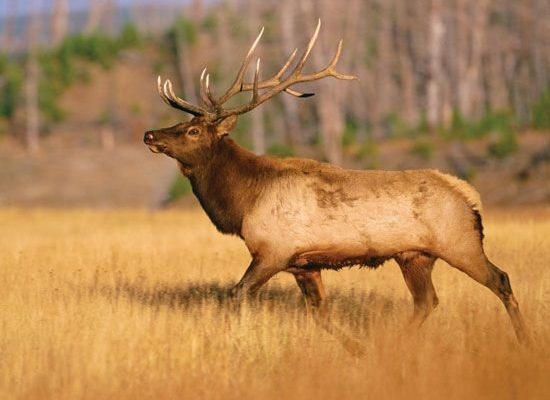
You might be surprised to learn that the wapiti we see today is just the latest chapter in a long saga of evolution. From their ancient relatives to their modern-day habitats, the evolutionary history of wapiti offers fascinating insights into how species adapt and survive. So, let’s grab a cup of coffee and dive into the incredible journey of the wapiti!
Origins of the Wapiti
Wapiti belong to the Cervidae family, which includes deer, moose, and caribou. The story of these animals goes back millions of years, tracing back to the **Miocene epoch**—a time when many familiar species were just beginning to take shape. During this period, massive shifts in climate and geography created new habitats for early hoofed mammals.
You might be wondering, what did prehistoric wapiti look like? Well, they were quite different from the wapiti we know today. **Ancient relatives**, such as the giant elk (Megaloceros), roamed across Europe and were characterized by enormous antlers that could stretch over ten feet wide! These impressive creatures thrived in the cool, open woodlands of Europe and Asia, filling a similar ecological role as modern wapiti.
As time passed and the environment continued to change, some of these prehistoric relatives migrated and adapted to new landscapes, eventually leading to the emergence of what we now recognize as wapiti. Through natural selection, they developed traits that allowed them to thrive in diverse habitats, from the dense forests to the open plains of North America.
Wapiti in North America
Wapiti made their way to North America approximately **10,000 years ago**, following the land bridge that connected Asia and North America during the last Ice Age. They adapted marvelously to the varied climates and ecosystems across the continent. Picture a world where vast herds of wapiti roamed the plains, their presence influencing the vegetation and the animals around them.
You might be surprised to learn that wapiti are not just a single species but consist of several subspecies. The **Rocky Mountain elk** is one of the most well-known, found primarily in the Rocky Mountains. On the opposite side, the **Tule elk** is native to California and has adapted to the warmer coastal climate.
These adaptations not only highlight the wapiti’s resilience but also reflect the rich biodiversity within the ecosystems they inhabit. Each subspecies tells a story of survival, showcasing how the wapiti has carved its niche in the grand tapestry of North American wildlife.
Behavioral Adaptations
One of the most fascinating aspects of wapiti is their behavior. Watching a wapiti interact with its environment is like witnessing a well-choreographed dance. During the mating season, known as the **rut**, adult males engage in vocal displays, producing deep calls that echo through the forests. This ritual is a way to attract females and assert dominance over other males.
You might wonder, how do they communicate beyond vocalizations? Wapiti also use body language and scent marking. They have a keen sense of smell, which helps them navigate their environment and locate mates. For example, males will leave their scent on trees and bushes, which not only signals their presence but also lets females know they’re nearby.
These behavioral adaptations are crucial for their survival. They allow wapiti to thrive in complex ecosystems, ensuring they can find food, shelter, and companionship.
Habitat and Diet
Wapiti are incredibly adaptable when it comes to their habitats. They’re found in a variety of environments, from pine forests to open grasslands. Their ability to thrive in diverse areas allows them to take advantage of the resources available to them throughout the seasons.
In terms of diet, wapiti are **herbivores**, primarily grazing on grasses, leaves, and twigs. During the winter months, when food becomes scarce, they can switch to a diet of bark and woody plants. This flexibility is a testament to their survival instincts. Imagine a dinner plate filled with a mix of greens, fruits, and grains—wapiti are no different in their appreciation for variety!
Another interesting fact is that they play a significant role in their ecosystem. As they graze, they help maintain the health of the vegetation, promoting growth and supporting other wildlife. So, when you see wapiti, remember they are not only stunning to behold but also vital participants in their habitats.
Conservation Status
Like many species, wapiti face challenges in the modern world. Their populations have fluctuated due to habitat loss, hunting pressures, and changes in land use. It’s a bit like trying to balance a seesaw; too much weight on one side can tip the balance and cause problems.
Conservation efforts have been crucial in stabilizing wapiti populations. National parks and protected areas provide safe havens for these animals, allowing them to flourish away from the pressures of development. Programs focused on **habitat restoration**, along with regulated hunting, aim to ensure that wapiti populations remain sustainable.
But here’s the thing: conservation isn’t just about protecting the wapiti. It also involves educating people about the importance of biodiversity and the interconnectedness of all living things. When we understand how to coexist with wildlife, we contribute to the health of our ecosystems.
The Future of Wapiti
Looking ahead, the future of wapiti depends on our actions today. Climate change and human activity continue to threaten their habitats, but awareness and education can foster positive change. By advocating for conservation and supporting sustainable practices, we can help ensure that wapiti thrive in the wild for generations to come.
You might be wondering what you can do to help. Even small actions, like participating in local conservation efforts or spreading awareness about the importance of preserving wildlife, can make a difference. Each step counts in the journey toward safeguarding these magnificent creatures.
In conclusion, the evolutionary history of the wapiti is a captivating tale of adaptation and resilience. From their ancient ancestors to their vital role in our ecosystems today, understanding their journey helps us appreciate the beauty of nature and the importance of conservation. So next time you see a wapiti, take a moment to reflect on its rich history and the path that brought it to the present—and let’s work together to ensure that path continues for years to come.

